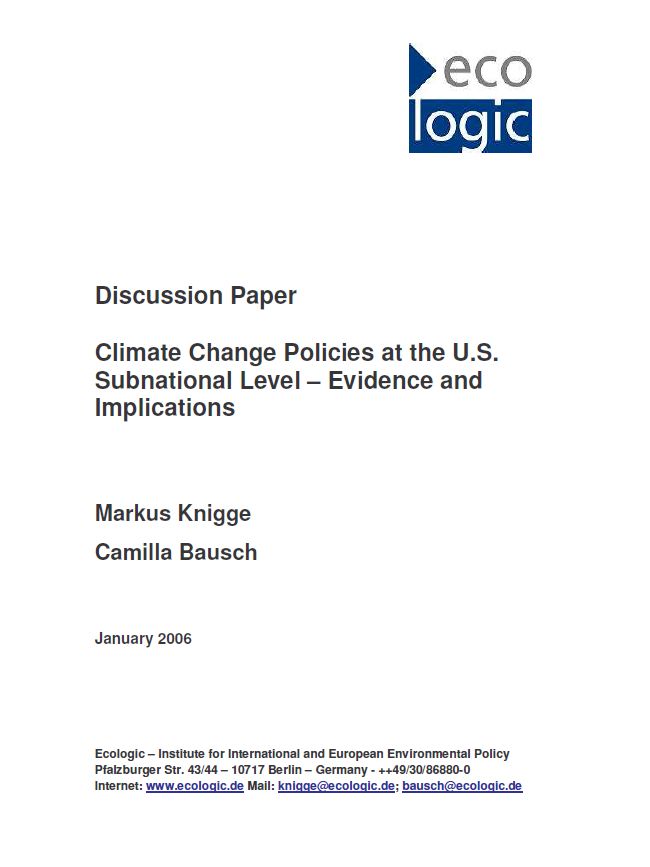Climate Change Policies at the U.S. Subnational Level – Evidence and Implications
Discussion Paper
- Publication
- Citation
Knigge, Markus and Camilla Bausch 2006: Climate Change Policies at the U.S. Subnational Level – Evidence and Implications (Discussion Paper). Ecologic Institut, Berlin.
Since the Kyoto Protocol came into force, the U.S. has been effectively pushed onto the sidelines in the area of international climate change politics. In fact, U.S. initiatives so far have by and large been limited to bilateral and regional partnerships to combat climate change through technological innovation. Interestingly, activities at the regional, state, and local levels indicate considerable potential within the American political framework, to develop policies at the subnational level that respond to the challenge of climate change. Senior Researchers, Markus Knigge and Camilla Bausch, published a discussion paper which identifies subnational activities and analyses their impacts on greenhouse gas emissions and policymaking at the federal level.
In the U.S. there are plenty of different climate change activities taking place on the subnational level. These range from public benefit funds to mandatory appliance or vehicle emission standards to emission trading. While certain states – in particular on the West Coast and in the North East - are more active and more progressive than others, the majority of states are involved in some activities. In addition, a substantial number of states have started to co-operate with each other to exchange policy practices or to embark on combined endeavours, such as emission trading or common vehicle standards across more than one state.
If individual U.S. states were ranked as nations, they would represent twelve of the top twenty-five global emitters of carbon dioxide, or thirty-four of the top fifty. Given this state of affairs, actions at the subnational level can clearly make a contribution to the reduction of global GHG emissions. Moreover, not only do states' climate change initiatives serve to reduce actual GHG emissions, they may also serve as examples for other states to follow, thus spreading practices across the continent and ultimately prompting regulation at the federal level.
History shows that states have long been incubators of policy ideas that ultimately sweep across regions and, in some instances, are later embraced in some form at the federal level. The paper analyses, on one hand, the factors which may drive the conversion of State into Federal policy, such as the emergence of new interest groups or the increase in regulatory uncertainty. On the other hand, it looks at the limitations placed on State policies, such as legal, financial or infrastructure constraints.






